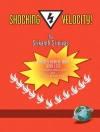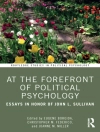The Schema Therapy Clinician’s Guide is a complete
clinical resource for psychotherapists implementing schema therapy,
group schema therapy or a combination of both in a structured,
cost-effective way. The authors provide ready-made individual and
group sessions with patient hand-outs.
* A unique resource providing ready-made individual and group
schema therapy sessions, linked across schema modes, allowing
clinicians to pick and choose what they need or adopt a full
integrated individual and group program which can be delivered over
a range of treatment lengths from a six week intensive program to a
one year outpatient treatment
* Approaches treatment by targeting maladaptive Schema Modes
rather than specific disorders, thus increasing clinical
flexibility and ensuring shelf life through changes in diagnostic
classification
* Provides step-by-step instructions and tips for therapists,
along with a wealth of unique clinical resources including sample
scripts, handouts, session exercises, assignment forms and patient
materials
* Meets the current need for effective clinical treatments that
can provide tangible effects on time and on budget
Daftar Isi
List of Figures and Tables ix
About the Authors xi
Foreword xiii
Acknowledgments xvii
About the Companion Web Site xix
1 Introduction 1
1.1 Background 1
1.2 The Chapters 3
2 The Basics of Schema Therapy 5
2.1 The Theoretical Model 5
2.2 Goals and Stages of Schema Therapy 9
2.3 Limited Reparenting 10
2.4 The Components of Schema Therapy 20
3 The Integrated Schema Therapy Treatment Program 21
3.1 The Patients: Who Are Good Candidates? 26
3.2 The Group Schema Therapy Sessions 27
3.2.1 The ‘Welcome’ session 28
3.2.2 Schema Therapy Education sessions 28
3.2.3 Mode Awareness sessions 28
3.2.4 Mode Management sessions 29
3.2.5 Experiential Mode Work sessions 29
3.3 The Individual Schema Therapy (IST) Sessions 30
3.4 Options for the Delivery of the Treatment Program 31
3.5 Structural Aspects of the Group Sessions 35
3.6 Assessment and Orientation 36
3.7 The Milieu of the Treatment Program 43
3.7.1 Multidisciplinary teams in intensive settings 43
3.7.2 The physical environment 45
4 The Group Schema Therapy Sessions 47
4.1 General Therapist Tips for Group Schema Therapy 52
4.2 The Welcome Group Session 59
4.3 Five Schema Therapy Education (STE) Sessions 70
4.4 The 12 Mode Awareness Sessions 95
4.5 The 12 Mode Management Sessions 114
4.6 The 12 Experiential Mode Work Sessions 195
4.6.1 Maladaptive Coping Mode sessions (EMW 1&7) 195
4.6.2 Dysfunctional Parent Mode sessions (EMW 2&8) 213
4.6.3 Vulnerable Child Mode sessions (EMW 3&9) 227
4.6.4 Angry/ Impulsive Child Mode sessions (EMW-ACM 4&10)240
4.6.5 Happy Child Mode sessions (EMW 5&11) 247
4.6.6 Healthy Adult Mode sessions (EMW 6&12) 255
5 The Individual Schema Therapy sessions 263
5.1 The Schema Therapy Conceptualization and Goals 265
5.2 The Maladaptive Coping Modes (MCM) 267
5.2.1 Schema Therapy behavioral pattern-breaking interventions267
5.2.2 Schema Therapy cognitive interventions 275
5.2.3 Schema Therapy experiential interventions 278
5.3 Dysfunctional Parent Modes (Dy PMs) 280
5.3.1 Schema Therapy behavioral pattern-breaking interventions280
5.3.2 Schema Therapy cognitive interventions (Handout:IST-Dy PM3) 282
5.3.3 Schema Therapy experiential interventions 288
5.4 The Vulnerable Child Mode 292
5.4.1 Schema Therapy behavioral pattern-breaking interventions292
5.4.2 Schema Therapy cognitive interventions 295
5.4.3 Schema Therapy experiential interventions 299
5.5 The Angry or Impulsive Child Mode (ACM, ICM) 302
5.5.1 Schema Therapy behavioral pattern-breaking interventions302
5.5.2 Schema Therapy cognitive interventions 306
5.5.3 Schema Therapy experiential interventions 309
5.6 The Happy Child Mode 311
5.6.1 Schema Therapy behavioral pattern-breaking interventions311
5.6.2 Schema Therapy cognitive interventions 313
5.6.3 Schema Therapy experiential interventions 315
5.7 The Healthy Adult Mode (HAM) 316
5.7.1 Schema Therapy behavioral pattern-breaking interventions316
5.7.2 Schema therapy cognitive interventions 317
5.7.3 Schema Therapy experiential interventions 319
6 Training, Supervision, Research, and Concluding Remarks321
6.1 Training 321
6.2 Supervision 321
6.3 Research on Schema Therapy 323
6.4 Concluding Remarks 324
References 326
Index 328
Tentang Penulis
Joan M. Farrell, Ph.D. is a Clinical Psychologist,
Research and Training Director of the Center for Borderline
Personality disorder Treatment and Research, Indiana University
School of Medicine, USA, and Adjunct Professor in the Department of
Psychology, Indiana University-Purdue University Indianapolis
(IUPUI). She is an International Society for Schema Therapy (ISST)
Certified Schema Therapy Trainer and Supervisor, the Coordinator
for Training & Certification of the ISST and an Executive Board
member.
Neele Reiss is a Researcher, Clinical Psychologist and
Schema Therapist in the Department of Differential Psychology and
Psychological Diagnostics, Goethe-University Frankfurt, Germany,
and a Director of the Institute for Psychotherapy in Mainz,
Germany. She is an International Society for Schema Therapy (ISST)
Certified Schema Therapy Trainer and Supervisor.
Ida A. Shaw, M.A. is the Director of the Schema
Therapy Institute Midwest, Indianapolis, USA, and Senior Clinical
Supervisor at the Center for BPD Treatment and Research, Indiana
University School of Medicine. She is an ISST Certified Schema
Therapy Trainer and Supervisor in Adult, Child-Adolescent and
Group.












